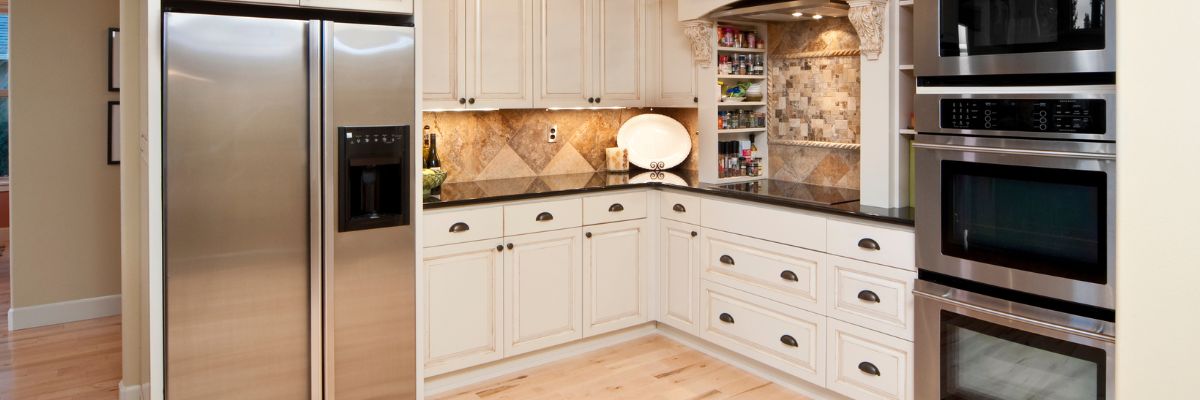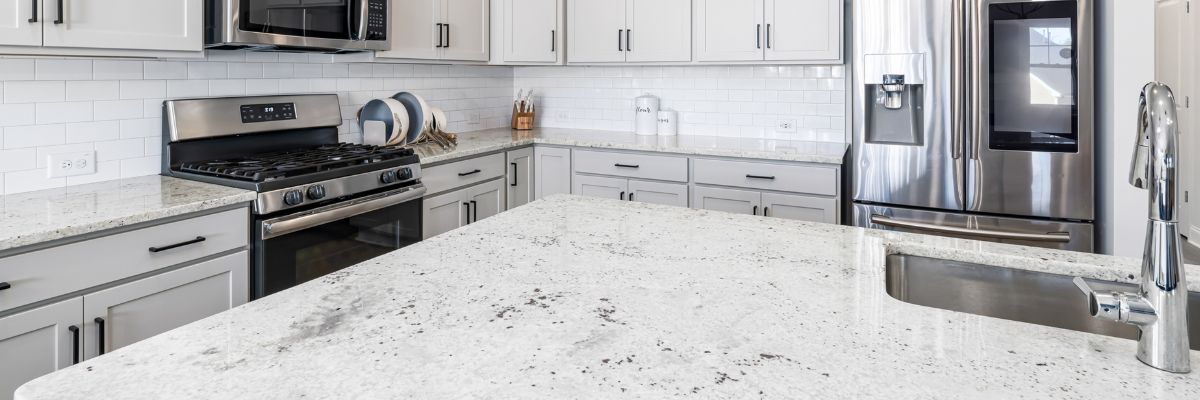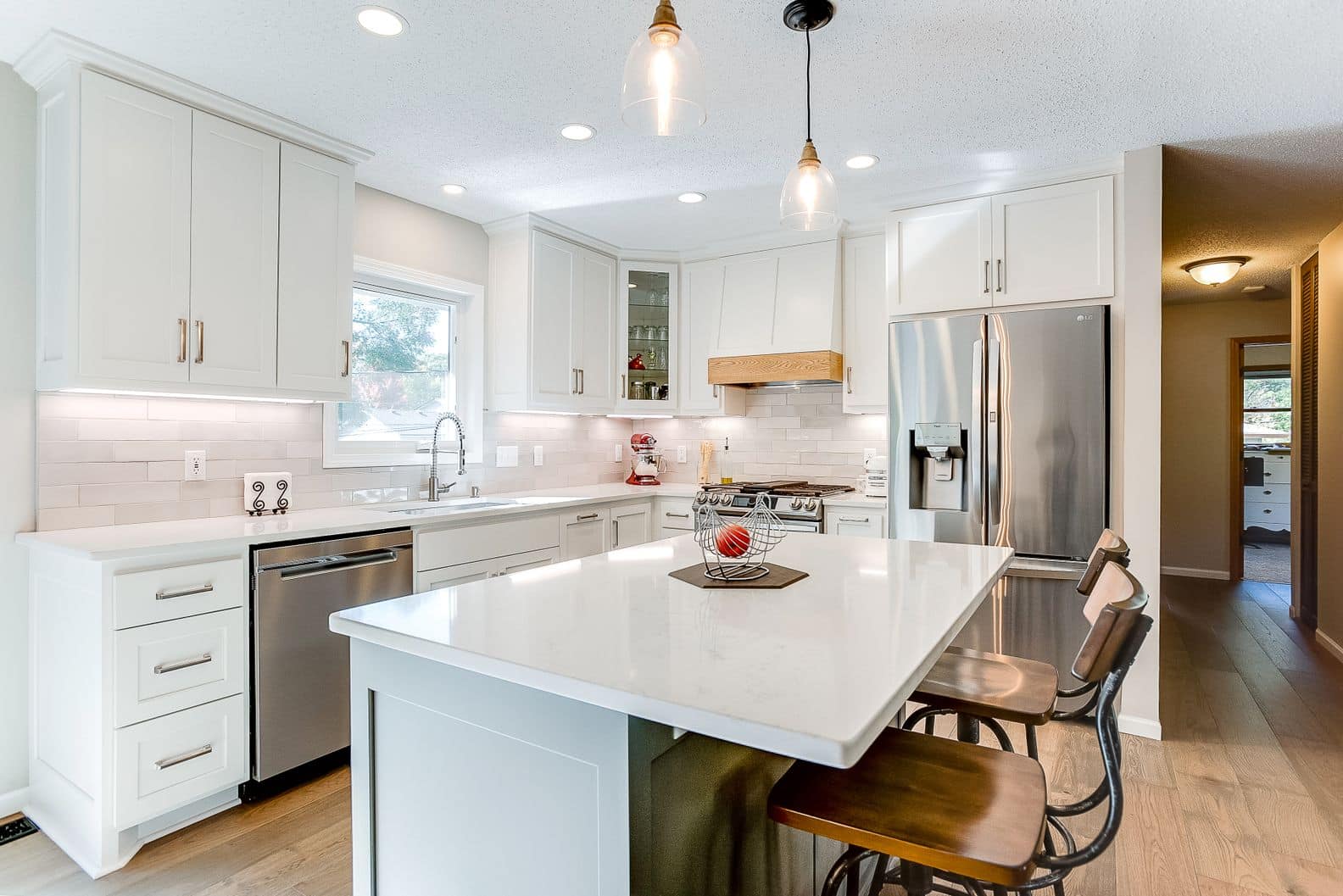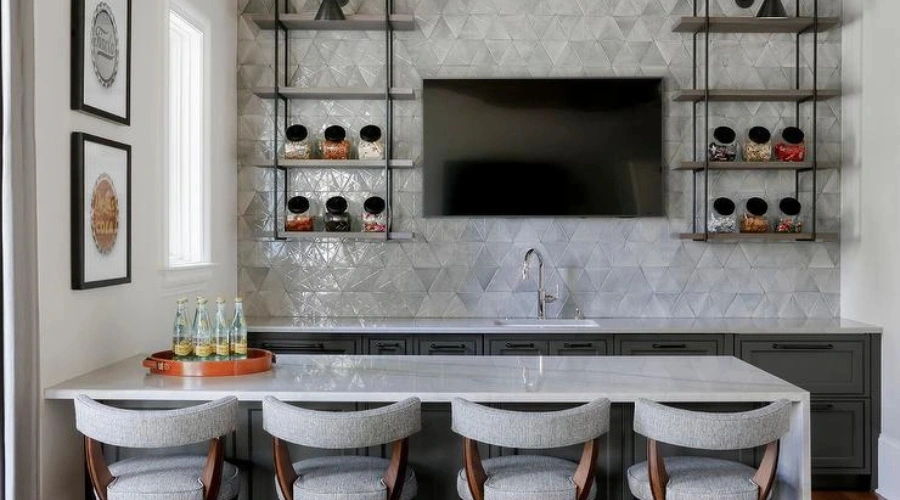In Minnesota, cabinets are typically the most expensive component of a kitchen remodel, accounting for 30-40% of the overall project budget. Appliances and countertops are the second and third most expensive items behind cabinetry.
Keep reading to understand the full cost of kitchen remodeling in Minnesota.
Why Are Cabinets The Most Expensive Part of a Kitchen Remodel?
Material Costs
Cabinets are often made from high-quality, durable materials like solid wood, plywood, or medium-density fiberboard (MDF). Premium materials, such as cherry, maple, or oak, significantly increase costs. Additionally, the choice of finishes, like custom paints or stains, and hardware, such as soft-close hinges and drawer pulls, further contributes to the expense.
Customization and Craftsmanship
Custom or semi-custom cabinets are tailored to fit the unique dimensions and layout of the kitchen. This customization involves precision craftsmanship, which requires skilled labor and additional time. Features like built-in organizers, pull-out trays, and integrated lighting add to the complexity and cost.
Installation Labor
Cabinet installation is labor-intensive, requiring precise measurements, leveling, and secure mounting to ensure functionality and durability. Professional installers charge a premium for their expertise, especially in intricate designs or kitchens with non-standard layouts.
Longevity and Value
Cabinets are designed to last for decades, making them a long-term investment in the home. Their durability and daily use justify the higher price point, as they must withstand frequent opening, closing, and exposure to kitchen conditions like heat and moisture.

The Second Most Expensive: Appliances
In kitchen remodeling, appliances often rank as the second most expensive component, following cabinetry. This is due to the significant role they play in the kitchen’s functionality and the wide range of options available, from basic models to high-end, feature-rich designs.
The percentage of the total kitchen remodeling budget allocated to appliances varies based on the project’s scope and the quality of appliances selected. Generally, appliances account for approximately 10% to 20% of the overall budget.
Appliance Tiers
- Low-End Appliances: Basic models that provide essential functions without advanced features. For example, standard refrigerators or dishwashers can start at around $500.
- Mid-Range Appliances: These offer a balance between cost and features, providing better performance and durability than entry-level options. Brands like GE, KitchenAid, and Whirlpool fall into this category, offering quality appliances at moderate prices.
- High-End Appliances: Premium appliances from brands such as Sub-Zero, Wolf, Thermador, and Miele are known for exceptional quality, advanced features, and sleek designs. These can be significantly more expensive, with some models exceeding $5,000.
Selecting the appropriate tier of appliances depends on individual needs, preferences, and budget constraints. While high-end appliances offer advanced features and aesthetics, mid-range options often provide a satisfactory balance of quality and affordability.

The Last Chunk: Countertops
In kitchen remodeling, countertops typically rank as the third most expensive component, following cabinetry and appliances.
Countertops generally account for approximately 10% of the total kitchen remodeling budget.
Countertop Tiers
- Low-End Countertops:
- Laminate: An affordable option, laminate countertops typically cost between $20 and $50 per square foot installed. They offer a variety of colors and patterns but are less durable compared to other materials.
- Mid-Range Countertops:
- Granite: A popular choice for its natural beauty and durability, granite countertops range from $70 to $175 per square foot installed. They require periodic sealing to maintain their appearance and resist stains.
- Granite: A popular choice for its natural beauty and durability, granite countertops range from $70 to $175 per square foot installed. They require periodic sealing to maintain their appearance and resist stains.
- High-End Countertops:
- Marble: Known for its luxurious appearance, marble countertops cost between $70 and $250 per square foot installed. While heat-resistant, marble is prone to scratching and staining, necessitating regular maintenance.
Selecting the appropriate countertop material depends on individual preferences, usage patterns, and budget constraints. While high-end materials like marble offer a premium look, mid-range options such as granite provide a balance between aesthetics, durability, and cost.
Conclusion
When remodeling a kitchen in Minnesota, cabinetry, appliances, and countertops represent the top three expenses, reflecting their importance in both functionality and design. Cabinets, being the largest investment, offer durability, customization, and long-term value, accounting for 30-40% of the budget. Appliances and countertops follow, each offering tiered options from budget-friendly to luxury, allowing homeowners to tailor their choices to their needs and financial plans. By understanding the cost distribution and making informed decisions, homeowners can create a kitchen that balances style, functionality, and affordability while maximizing value.




